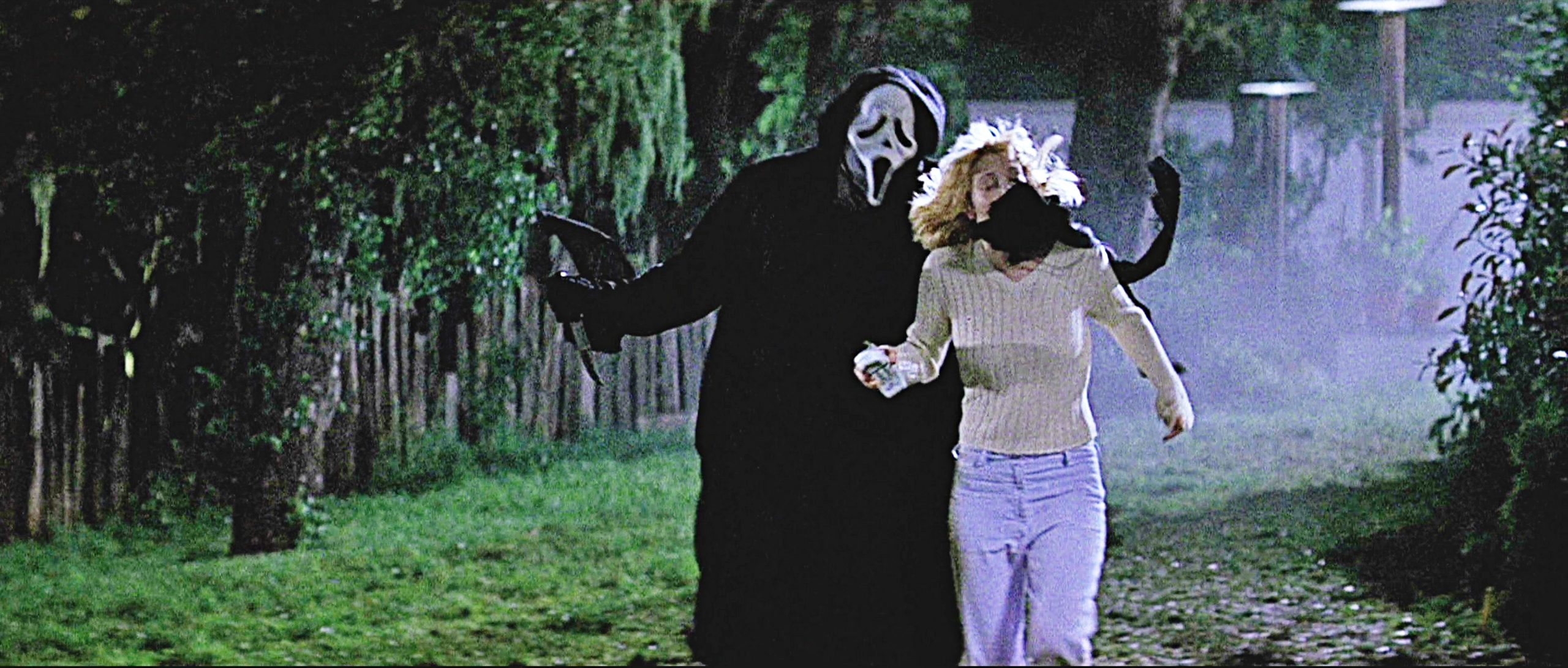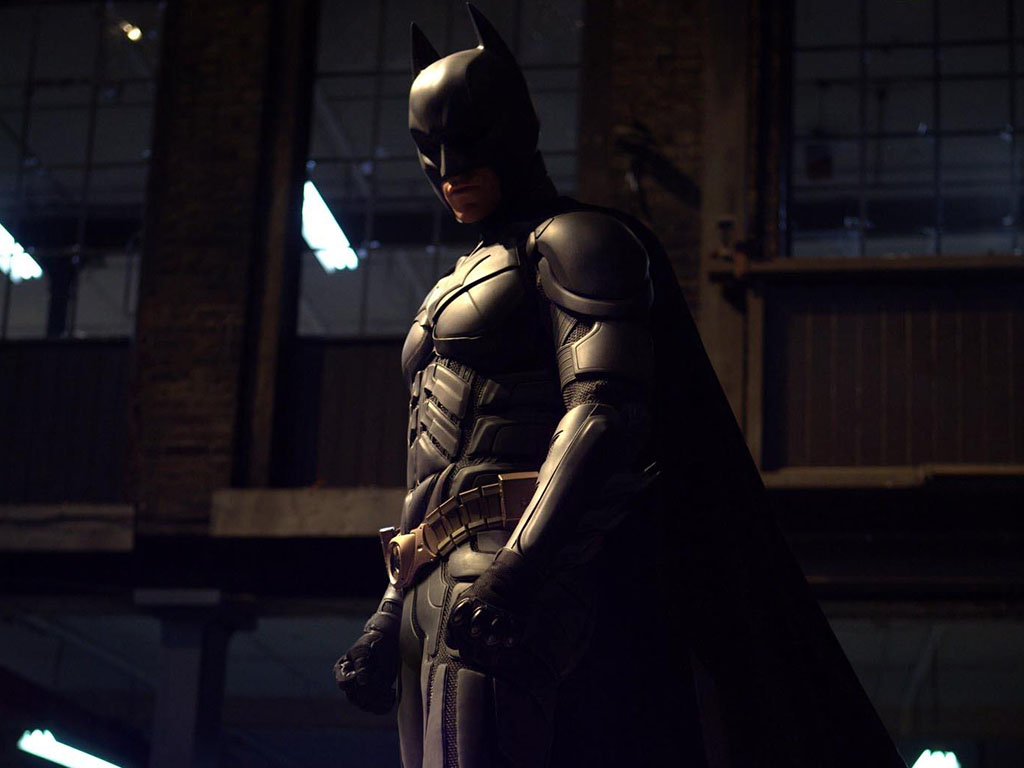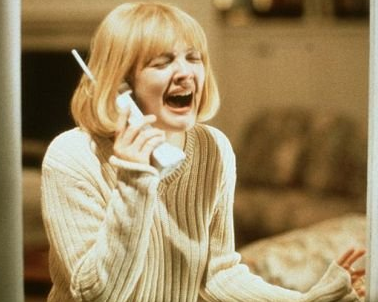
How is the opening sequence of ‘Scream’ conventional to a thriller opening?
The opening extract of the thriller
‘Scream’ is conventional to a thriller opening through the use of the micro
elements of camerawork, soundtrack, editing and mise en scene.
In this extract a close up is evident when
the female victim is on the phone to the antagonist allowing the audience to
see her facial expressions and emotions clearly. This emphasises the victims
unbearable fear and symbolises the negative impact the phone call has had on
her. She is unable to hide her emotions and breaks down while speaking to the
antagonist enabling him to see her vulnerability and perceiving her as an easy
target to kill. The close up of the victims face presents her as dependent and needy
making the audience respond with a chilling response as they fear for the
victims life as they wait in suspense for the outcome. This is conventional to
a thriller opening as it is expected for the opening to immediately have an effect
of the viewer to ensure that they build up anticipation and adrenaline looking
forward to watching more of the film.
Furthermore, a zoom shot is used in the
extract when the female victim is hanging and the camera zooms from the parent’s
perspective into the victims face allowing the audience to perceive the victims
state. This generates the audience to fear the antagonist as the female victim
looks possessed as well as being in a horrifying state covered in blood. This highlights
that the antagonist is capable of committing abnormal murders creating a
chilling response from the audience as they are fully aware of the antagonist’s
behaviour and the games he plays on victims. Therefore the audience wait
apprehensively in suspense to see what the following murders will consist of.
This is conventional to the opening scene of a thriller as it prepares the
audience for the disequilibrium that will mess with their mind set and show the
disturbed actions of the antagonist and the effect it will have on victims.
Moreover, off screen sound is evident in
this extract when the antagonist speaks to the victim on the phone. The
antagonist voice is coming through the phone however we are unable to predict
where the antagonist is or who the antagonist is, therefore the audience only
familiarise with the antagonist and make judgements through his voice. This
indicates that the antagonist has a disturbed persona as he uses the phone to
warn his victims and torture them before physically committing the crimes. This
creates a chilling response from the audience as tension is created through the
antagonists messages and his aggressive tone indicating him as an evil and
mysterious character. This is conventional to a thriller opening of a film as
the antagonist is not immediately introduced and they somehow make themselves
known through other ways such as phones, letters or images.
Parallel sound is also used in this extract. This is evident when the antagonist catches the victim and stabs her with a knife. The stabbing sounds are parallel as this is expected from the antagonist who creates pain for the victims and makes them suffer. This creates a chilling response from the audience as they put themselves in the victim’s shoes and can only imagine her ill state. This is conventional to a thriller opening as it is expected for a victim to suffer the consequences of the antagonist and it immediately introduces the antagonist’s capability and gives the audience an insight of what the antagonist will do further on in the film and how he will effect society and the victim’s lives. It is also conventional as it is expected for the antagonist to commit horrific crimes giving the audience an insight of the characters motives and their relationships with other characters in the film. However, it is unusual for the attack to take place so early on in the film as the audience do not expect to feel adrenaline from the beginning and it is expected for the tension to build up first. However, in this opening the audience immediately view a murder creating suspense and tension early on.
Parallel sound is also used in this extract. This is evident when the antagonist catches the victim and stabs her with a knife. The stabbing sounds are parallel as this is expected from the antagonist who creates pain for the victims and makes them suffer. This creates a chilling response from the audience as they put themselves in the victim’s shoes and can only imagine her ill state. This is conventional to a thriller opening as it is expected for a victim to suffer the consequences of the antagonist and it immediately introduces the antagonist’s capability and gives the audience an insight of what the antagonist will do further on in the film and how he will effect society and the victim’s lives. It is also conventional as it is expected for the antagonist to commit horrific crimes giving the audience an insight of the characters motives and their relationships with other characters in the film. However, it is unusual for the attack to take place so early on in the film as the audience do not expect to feel adrenaline from the beginning and it is expected for the tension to build up first. However, in this opening the audience immediately view a murder creating suspense and tension early on.
Fast pace
editing is used in this extract when the female victim is panicking
and she begins running around the house locking the doors, then it is
continued when the antagonist gets inside the house while the victim
tries to escape. The use of the fast pace editing creates adrenaline
and excitement for the audience and creates fear for the victim as she tries not to get caught by the antagonist who she knows is going to do harm to her. This is conventional to the thriller genre as it is expected for fast pace editing to occur during the disequilibrium which creates suspense for the audience and the characters who predict the outcome as they sit in the edge of their seats.
Moreover, a reaction shot is evident when the female victim reacts after seeing her boyfriend in a chair tied up. She understands that he is in danger and begins to scream and cry historically while locking the door for safety. This creates a chilling response from the audience as they get to understand how disturbed the antagonist is and that he is extremely knowledgeable due to being able to get hold of the victims boyfriend and put him in danger as we'll as the female victim. This is conventional to the thriller genre as it is expected for the female victim to be put in a difficult position by the antagonist causing her to be traumatised and vulnerable making her react by crying and screaming.
Furthermore, the elements within the micro element mise en scene including lightning, body language and facial expression, setting, iconography and costume (hair and makeup) all make the opening stereotypical to a thriller opening and the thriller genre.
Low lighting is evident when the victim is outside hiding and trying to escape from the antagonist with the colour black evident connoting danger and death. This creates fear and suspense for the audience as they await for the antagonists approach. When the antagonist finally begins chasing the victim the use of the low lighting and the colour black symbolises that the victim has no escape and is left to suffer the antagonists vile consequences. This is conventional to the thriller genre as the disequilibrium which the victim is attacked or killed usually takes place at night when the antagonist is less likely to be identified and the victims screams are not to be heard. This also creates a chilling response from the audience as the adrenaline and tension builds for them due to the event taking place at night making them fearful. The use of the low lighting portrays the negative future ahead of the victim and represents the antagonist as a threatening and psychotic individual.
The female victims facial expression is full of fear and terror as the antagonist threatens her over the phone. It portrays her as a weak and fragile person as she is unable to protect herself and knows she cannot ignore the antagonist as he knows to much. This creates a chilling response from the audience as they are unaware of the antagonists whereabouts and how he is so knowledgeable telling the victim about herself. Her body language is tense and she crawls and hugs her legs in order for the antagonist to not find her or attack her. This is expected from the female victim and is conventional to the thriller genre as she has no other escape and does not have anywhere else to go therefore, uses her size to her ability to make herself as small as possible so she is lot easily seen by the antagonist. This crates a chilling response from the audience as they sympathise with the victim and wait in suspense to see what the antagonist will do and if he will find the victim.
Additionally the setting is in the female victims home which is in a suburban location, making it impossible for the female victim to seek help as she has nobody around to help her. This creates a chilling response from the audience as they know the victim will eventually be caught by the antagonist as escape is almost impossible . This is conventional to the thriller genre as the victims homes are the prior location for an attack and murder to take place as it heightens suspense and adds to the pressure.
The iconography used in this scene includes, popcorn which is placed on the stove at the beginning of the scene and is evident until the end of the scene, a telephone which is used by the female victims who is threatened by the antagonist and a knife which is used by the antagonist to kill the female victim. The use of the popcorn symbolises the female victims life as it begins to cook at a steady pace, similarly the female victim is getting ready to watch a movie and there is no disruption occurring yet, the popcorn then cooks and pops rapidly demonstrating the female victim being threatened and left to face the consequences, then the popcorn burns and sets alight, which is similar to the female victim being stabbed to death and left hanging. Therefore, the use of the popcorn illustrates the steps of the victims situation. The knife connotes danger and death and the antagonist uses the knife aggressively when he kills he female victim. The most important iconography is the telephone as it is the main source that is used for the problems to occur and develop. Every time the phone is heard to ring tension is created and the victim is immediately full of dread. The knife and the phone are conventional to the thriller genre as these are common connotations of the negative things that occur and connote danger, death and create adrenaline for the audience who predict the outcomes. The use of popcorn is not conventional however is commonly eaten by viewers and the audience and the female victim was gong to eat them when watching a film therefore is conventional to her situation.
The victims costume is a white jumper connoting the female victims innocence and purity displaying her as a sympathetic victim conventional to the thriller genre. She has little makeup at the beginning of the scene however is smothered in blood at the end of the scene after she is stabbed numerously by the antagonist. This is conventional to the thriller genre as it is expected for the victim to be covered in blood after being attacked and killed demonstrating the state she is in and highlighting her devastating experience. The audience respond with a chilling response as they feel sorry for the victim and cannot imagine her feelings however they loath the antagonist after seeing what he is capable of. The antagonist on the other hand, is dressed in a long black outfit and a threatening mask that symbolises he is hiding his identity and therefore cannot be identified by the other characters. The use of the black outfit connotes the antagonists bad intensions and suggests he is going to cause harm to innocent victims. The antagonist wears a mask that is also black and white however this creates a chilling response from the audience as they are in suspense as to who the antagonist is and what he looks like. There is a sense of the fear of the unknown as the audience do not know what to expect from the antagonist.
Overall, the extensive use of the micro elements in the Scream opening makes it conventional to the thriller genre and opening as it creates heightened suspense for the audience who sit on the edge of their seats waiting for the outcome of the current situation. When creating my thriller film I will take into consideration the micro elements and ensure I use the conventional elements, for example the victim will wear neutral colours presenting their innocence and purity while the antagonist wears a dark colour illustrating them as powerful with dark intensions. Also, the victim will have a fearful facial expression demonstrating their vulnerability while the antagonist is confident and stern symbolising them as overpowering and a threat to the victim and audience. After analysing the 'Scream' opening scene I now have a clearer understanding of the conventional micro elements that I should include to make my thriller conventional to the thriller genre.
 |
| iconography-popcorn |
| iconography-knife |
 |
| iconography-telephone |
The victims costume is a white jumper connoting the female victims innocence and purity displaying her as a sympathetic victim conventional to the thriller genre. She has little makeup at the beginning of the scene however is smothered in blood at the end of the scene after she is stabbed numerously by the antagonist. This is conventional to the thriller genre as it is expected for the victim to be covered in blood after being attacked and killed demonstrating the state she is in and highlighting her devastating experience. The audience respond with a chilling response as they feel sorry for the victim and cannot imagine her feelings however they loath the antagonist after seeing what he is capable of. The antagonist on the other hand, is dressed in a long black outfit and a threatening mask that symbolises he is hiding his identity and therefore cannot be identified by the other characters. The use of the black outfit connotes the antagonists bad intensions and suggests he is going to cause harm to innocent victims. The antagonist wears a mask that is also black and white however this creates a chilling response from the audience as they are in suspense as to who the antagonist is and what he looks like. There is a sense of the fear of the unknown as the audience do not know what to expect from the antagonist.
 |
| characters contrasting outfits |
Overall, the extensive use of the micro elements in the Scream opening makes it conventional to the thriller genre and opening as it creates heightened suspense for the audience who sit on the edge of their seats waiting for the outcome of the current situation. When creating my thriller film I will take into consideration the micro elements and ensure I use the conventional elements, for example the victim will wear neutral colours presenting their innocence and purity while the antagonist wears a dark colour illustrating them as powerful with dark intensions. Also, the victim will have a fearful facial expression demonstrating their vulnerability while the antagonist is confident and stern symbolising them as overpowering and a threat to the victim and audience. After analysing the 'Scream' opening scene I now have a clearer understanding of the conventional micro elements that I should include to make my thriller conventional to the thriller genre.





















